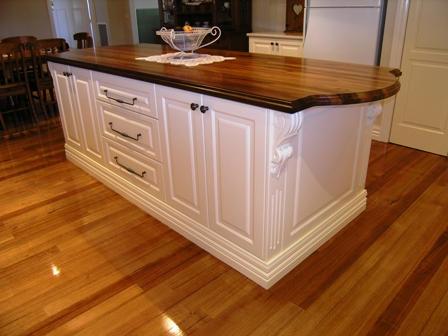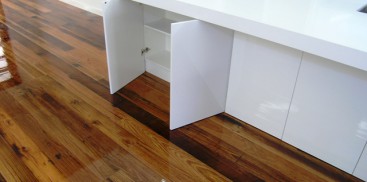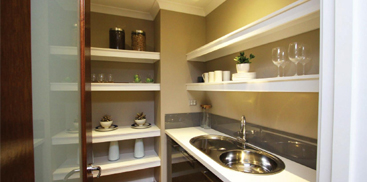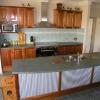
Kitchen Design Tips
Design and layout ideas
The kitchen should be practical and cheerful, employing smart design to maximise functionality and make effective use of available light and space. Use our tips to help you plan an attractive, user-friendly food preparation area that won't break the budget.
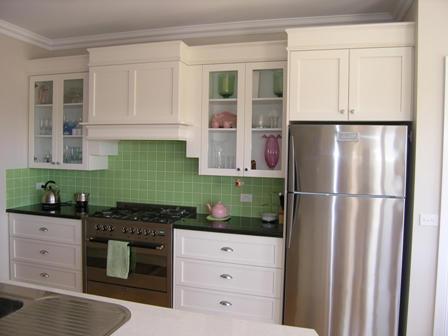
Initial considerations
- Be guided by common sense and convenience. Work out what's annoying about your existing kitchen - lack of light, bench space or power outlets, a single sink, a difficult-to-clean stovetop. Attempt to iron out those problems in the new design.
- Don't be overly constrained by the existing configuration. Often pipes, gas lines electrics, walls and windows can be repositioned with less effort than you'd expect.
- Save money by retaining some fittings (resurfacing or refitting as needed).
- To save you time and stress consider a kitchen design/installation package.
- If clever design can't solve space problems consider expanding the kitchen via a buffet-style breakfast bar or island bench.
- If you enjoy al fresco entertaining and have sufficient space consider adding an outdoor kitchen.
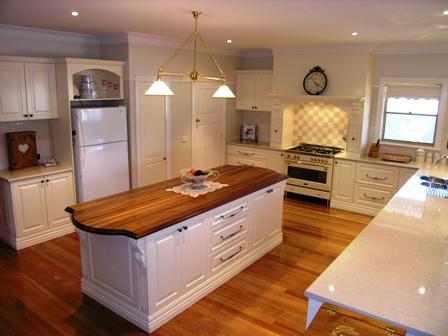
Layout and traffic
- Plan your kitchen considering the natural pattern of movement. Allow a comfortable distance between each of the kitchen's functions: storage, cooking, workspace, waste handling and washing up.
- Position sink, fridge and cooktop so they form a 'work triangle'. The oven (or hotplate), sink and refrigerator should be no more than 7m apart in total and should be in the shape of a triangle.
- Note that left- or right-handedness affects layout: for a good right-handed flow, position in this order (R to L): dishwasher/dishdrainer/sink, workspace, cooking unit, utility storage.
- Position the sink, drainage and dishwasher first. This will comprise the biggest single unit in your kitchen.
- Sinks are usually placed against an outside wall under a window for convenient drainage and good natural lighting.
- The dishwasher should be close to the crockery and cutlery. It should also be away from doorways and stove, so it can be loaded easily.
- Locate the food preparation areas between the stove and the sink.
- Ensure appliances, sinks, benchtops and cabinetry all fit, accounting for the 'sweep' of doors and opening drawers and allowing for normal movement.
- Allow 200mm clearance from the wall adjacent to the hinge of a fridge door and if installing a walloven, allow 200mm from any adjacent wall for elbow clearance.
- A minimum of 120cm is required between combinations in a double-sided kitchen so two people can work comfortably without getting in each other's way.
- The same distance is recommended between kitchen unit and dining table so that a person can sit comfortably at the table while another works by the kitchen counter.
- Most kitchens will already have service points for major appliances. Changing these points can cost a great deal of money, so if you don't have an unlimited budget, your design choices may be somewhat predetermined.
- If you're gutting your kitchen, consider installing extra power points at the time, as it is very expensive to get new ones put in when all the other work has been completed.
Work surfaces
- Provide ample work surfaces in key areas: next to the refrigerator and oven; on both sides of the cooktop and sink.
- For safety and efficiency, allow adequate bench space for preparation (80-140cm) between sink and hotplates, 30cm at each side of the cooktop) and serving (300mm for two plates, double for four); and at least 450mm set-down next to the fridge, pantry and wall oven. The recommended counter top depth is 60cm.
- Set benches at varying heights to accommodate different tasks and users. A good working height is 80-95cm.
- Ensure your hotplate is lower and your sink higher than adjoining preparation benches.
- Avoid positioning a workspace or cook unit in a corner.
